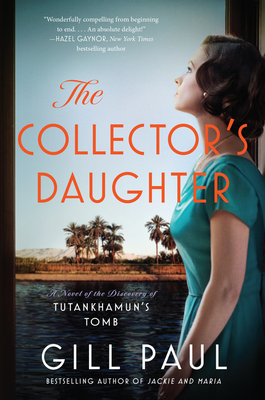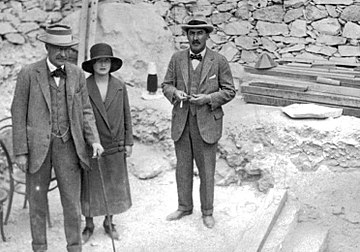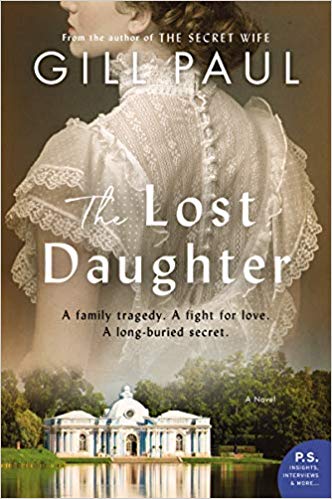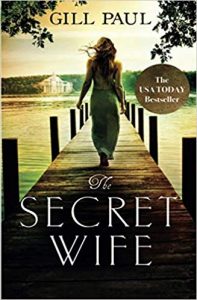 The Collector's Daughter: A Novel of the Discovery of Tutankhamun's Tomb by Gill Paul
The Collector's Daughter: A Novel of the Discovery of Tutankhamun's Tomb by Gill Paul Format: eARC
Source: supplied by publisher via Edelweiss
Formats available: paperback, ebook, audiobook
Genres: historical fiction
Pages: 384
Published by William Morrow Paperbacks on September 7, 2021
Purchasing Info: Author's Website, Publisher's Website, Amazon, Barnes & Noble, Kobo, Bookshop.org
Goodreads
A Paperback Original
Bestselling author Gill Paul returns with a brilliant novel about Lady Evelyn Herbert, the woman who took the very first step into the tomb of Pharaoh Tutankhamun, and who lived in the real Downton Abbey, Highclere Castle, and the long after-effects of the Curse of Pharaohs.
Lady Evelyn Herbert was the daughter of the Earl of Carnarvon, brought up in stunning Highclere Castle. Popular and pretty, she seemed destined for a prestigious marriage, but she had other ideas. Instead, she left behind the world of society balls and chaperones to travel to the Egyptian desert, where she hoped to become a lady archaeologist, working alongside her father and Howard Carter in the hunt for an undisturbed tomb.
In November 1922, their dreams came true when they discovered the burial place of Tutankhamun, packed full of gold and unimaginable riches, and she was the first person to crawl inside for three thousand years. She called it the “greatest moment” of her life—but soon afterwards everything changed, with a string of tragedies that left her world a darker, sadder place.
Newspapers claimed it was “the curse of Tutankhamun,” but Howard Carter said no rational person would entertain such nonsense. Yet fifty years later, when an Egyptian academic came asking questions about what really happened in the tomb, it unleashed a new chain of events that seemed to threaten the happiness Eve had finally found.
My Review:
Once upon a time, there was a crocodile on a sandbank. While that particular crocodile doesn’t make an appearance in this book (although there is A crocodile), it’s still the reason I picked this book up. I’m referring to the first Amelia Peabody book by Elizabeth Peters, Crocodile on the Sandbank, published only three years after the more modern parts of The Collector’s Daughter take place. I still miss Amelia, and I still look for books that remind me of her. I hoped that this book, wrapped around famous ( or infamous) events in Egyptology featuring people that Amelia would have known and had firm opinions about – as she always did – would scratch my itch to hear Amelia’s rather forthright voice in my head one more time.

The lovely thing about this particular story, however, is that at least the bare bones of it are true. Lady Evelyn Leonora Almina Beauchamp (née Herbert) was the daughter of Lord Carnarvon. THE Lord Carnarvon who sponsored Howard Carter’s discovery of Tutankhamun’s tomb. Evelyn, along with her father and Howard Carter, was truly one of the first people to see the inside of the famous tomb in modern times. Even if those modern times were nearly a century ago.
Howsomever, the way that the story split its timelines between the 1920s and the 1970s meant that it wasn’t exactly the book that the blurb would lead one to expect. Because that blurb, along with the book’s subtitle, gives every impression that the more significant part of the story revolves around the discovery of Tutankhamun’s tomb. And unfortunately it doesn’t.
Instead, the larger part of the story takes place in the 1970s, just after the latest in a series of strokes that Eve suffered throughout her real life, after a severe automobile accident in 1935. Whether this particular stroke mirrors reality or not, it is true that the threat of another stroke hung over her life very much like the curse of Tutankhamun – even if that curse was entirely a creation of the press looking for sensationalism.
So most of the book takes place in the 1970s, and much of its time, its mystery and its pathos are wrapped around Eve’s months of recovery, her flashbacks of memory during that recovery, her husband’s love for her and his fears about the future as they are both in their 70s, and the attempts by an unscrupulous archaeologist to get a compromised Eve to reveal secrets that she has been keeping for 50 long and tumultuous years.
Escape Rating B+: The issue with this book is that it is a much quieter and gentler book than the reader has been led to expect from the blurb and the subtitle. I was expecting, honestly, a bit of Amelia. A woman perhaps a bit ahead of her time who overcame obstacles and had adventures. Because, let’s face it, being one of the very first people to see the inside of Tutankhamun’s tomb in thousands of years should have been a great adventure. The adventure of a lifetime. I was expecting to read a story about that adventure.
But that’s not what this story is about. Partially that’s because it is wrapped around Eve’s real life, and Eve is, as her Wikipedia entry puts it, “known for (being) present at the opening of Tutankhamun’s tomb. She didn’t discover it. She didn’t work on the team that made the discovery. She was not an archeologist – and neither was her father Lord Carnarvon. Eve was present because her father provided the funding for Howard Carter’s expedition, and she was the first in the tomb because she was able to fit through a much smaller hole than either her father or Carter.
Then her father died, the lurid story of the curse was born, and Eve left Egypt for home, never to return, although she and Howard Carter remained friends for the rest of Carter’s life.
This story isn’t really about the discovery. It’s really about the way that the discovery has haunted her life and the way that the secrets she kept hidden loomed in the background. The secrets really existed, as revealed in her uncle’s diary many years after she returned to England. There had always been rumors that she, her father and Howard Carter had made a surreptitious visit to the inside of the tomb before the officials came down from Cairo to certify the find. And that while they were inside the tomb, a few small items made their way into all of their pockets. In a way, this is a story about the way that the thing that Eve stuck in her pocket has hung over her life rather like a bad smell. Still it seems to have been a good life, a comfortable life, and even if it was visited by tragedy, it seems like no more than any other – curses notwithstanding.
But readers expecting something like the 1999 film The Mummy, where Rachel Weisz plays a character named Evelyn Carnahan who is based on Eve Herbert, are going to be a bit disappointed. As I was in Eve’s lack of resemblance to the redoubtable Amelia Peabody. Or even to amateur detective Jane Wunderly in Murder at the Mena House. But if you’re looking for a quiet, lovely book about a woman who did not transcend her time but lived in the shadow of her one great adventure, there’s plenty of charm and a great deal to enjoy in The Collector’s Daughter.
It just wasn’t quite the book I was looking for.

 The Lost Daughter by
The Lost Daughter by  Instead, one misdirects the other guards, and one spirits her away, to a life of, if absolutely not luxury, then a life of, well, life, with all of its joys and sorrows, hidden in plain sight in the Soviet Union. While she mourns her family and always wonders if her sister Tatiana escaped (that story is in
Instead, one misdirects the other guards, and one spirits her away, to a life of, if absolutely not luxury, then a life of, well, life, with all of its joys and sorrows, hidden in plain sight in the Soviet Union. While she mourns her family and always wonders if her sister Tatiana escaped (that story is in 